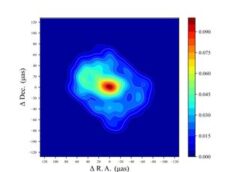NASA won’t be getting a big budget boost next year. The White House allocated $25.4 billion to NASA in its federal budget request for fiscal year 2025, which was released today (March 11). That’s a 2% increase over the $24.9 billion the agency is getting for fiscal 2024, an amount that was enacted by Congress just last Friday (March 8). That enacted amount is a substantial cut from the $27.2 billion that the White House requested for the current fiscal year. So there’s certainly no guarantee NASA will get the…
Read MoreNASA Awards Environmental, Safety, Health, Mission Assurance Contract
NASA NASA has selected Bastion Technologies Inc. of Houston to provide support services in four broad technical areas including environmental, institutional operational safety, occupational health, aeronautics and space systems, and ground support equipment mission assurance. The Environmental, Safety, Health, and Mission Assurance contract is cost-plus-fixed-fee with indefinite-delivery/indefinite-quantity task orders with a maximum value of approximately $125.4 million. The performance period is from May 1, 2024, to April 30, 2029. Services will be provided at NASA’s Glenn Research Center at Lewis Field in Cleveland and Neil Armstrong Test Facility in Sandusky,…
Read MoreTotal Solar Eclipse 2024: The Moon’s Moment in the Sun
5 min read Total Solar Eclipse 2024: The Moon’s Moment in the Sun Artist’s representation of a total solar eclipse, with a new moon in the foreground and the Sun’s corona visible in the background. Download the Poster NASA/Vi Nguyen On April 8, 2024, much of North America will experience a solar eclipse: a cosmic alignment of Sun, Moon, and Earth, in that order. The Moon’s shadow path will make landfall on Mexico’s Pacific coast, cross the United States from Texas to Maine, and exit North America via Newfoundland, Canada,…
Read MoreStatement from NASA’s Janet Petro on Fiscal Year 2025 Budget Request
NASA Kennedy Space Center Director Janet Petro. NASA/Cory Huston “The rollout of the President’s 2025 budget offers the opportunity to highlight some of the exciting happenings that are helping launch humanity’s future at NASA’s Kennedy Space Center in Florida. Every dollar spent on the agency goes toward U.S. prosperity and improving life on Earth. In the state of Florida, more than 27,000 jobs can be attributed to work performed here. “Kennedy is proud to support the administration’s goals and priorities for NASA, including the Artemis campaign, an American presence in…
Read MoreMoon and Sun Over Wyoming
The Moon is seen passing in front of the Sun at the point of the maximum of the partial solar eclipse near Banner, Wyoming on Monday, Aug. 21, 2017. A total solar eclipse swept across a narrow portion of the contiguous United States from Lincoln Beach, Oregon to Charleston, South Carolina. A partial solar eclipse was visible across the entire North American continent along with parts of South America, Africa, and Europe. Photo Credit: (NASA/Joel Kowsky)
Read MorePresident’s NASA FY 2025 Funding Supports US Space, Climate Leadership
NASA The Biden-Harris Administration Monday released the President’s Budget for Fiscal Year 2025, which includes funding to invest in America and the American people and will allow NASA to continue advancing our understanding of Earth and space while inspiring the world through discovery. “As history has proven, as the present has shown, and as the future will continue to demonstrate, an investment in NASA is an investment in America for the benefit of humanity,” said NASA Administrator Bill Nelson. “President Biden’s budget will fund our nation’s abilities and leadership for…
Read MoreSpaceX to launch 23 Starlink satellites from California tonight in 2nd leg of spaceflight doubleheader
SpaceX will launch 23 more of its Starlink internet satellites from California tonight (March 10), in the second leg of a planned spaceflight doubleheader. A Falcon 9 rocket carrying the Starlink spacecraft is scheduled to lift off from Vandenberg Space Force Base during a 3.5-hour window that opens tonight at 10:13 p.m. EDT (0213 GMT on March 11). It will be the second Starlink mission in a little over three hours, if all goes according to plan; the company earlier launched 23 of the broadband craft from Florida’s Space Coast…
Read MoreSpaceX launches 23 Starlink satellites from Florida
SpaceX launched 23 of its Starlink internet satellites from Florida on Sunday (March 10). A Falcon 9 rocket carrying the Starlink spacecraft lifted off from Cape Canaveral Space Force Station at 7:05 p.m. EDT (2305 GMT). Related: Starlink satellite train: How to see and track it in the night sky The first stage of a SpaceX Falcon 9 rocket lands on the droneship “Just Read the Instructions” stationed in the Atlantic Ocean on Sunday, March 10, 2024. (Image credit: SpaceX via X) The Falcon 9’s first stage came back to…
Read MoreBenro Rhino 24C Two Series travel tripod and VX25 head review
Unless you’re lucky enough to live near a dark sky site, most astrophotography sessions involve traveling to those dark sky areas — this could be by car, airplane, train or hiking. Having a lightweight, reliable travel tripod is essential. If this sounds like something you’re missing, let us introduce you to the Benro Rhino travel tripod. Specifications Weight: 3.8 lbs / 1.74kgMaximum payload: 39.7 lbs / 18kgMaximum Height: 66.3-inches / 1.69mFolded length: 19.3-inches / 490mmLeg sections: 4Head: Ball-headAccessory mounts: 3Feet: Rubber or spiky It’s compact and lightweight, made of excellent…
Read MorePeering Into the Tendrils of NGC 604 with NASA’s Webb
4 Min Read Peering Into the Tendrils of NGC 604 with NASA’s Webb Star-forming region NGC 604. Credits: NASA, ESA, CSA, STScI The formation of stars and the chaotic environments they inhabit is one of the most well-studied, but also mystery-shrouded, areas of cosmic investigation. The intricacies of these processes are now being unveiled like never before by NASA’s James Webb Space Telescope. Two new images from Webb’s NIRCam (Near-Infrared Camera) and MIRI (Mid-Infrared Instrument) showcase star-forming region NGC 604, located in the Triangulum galaxy (M33), 2.73 million light-years away…
Read More














